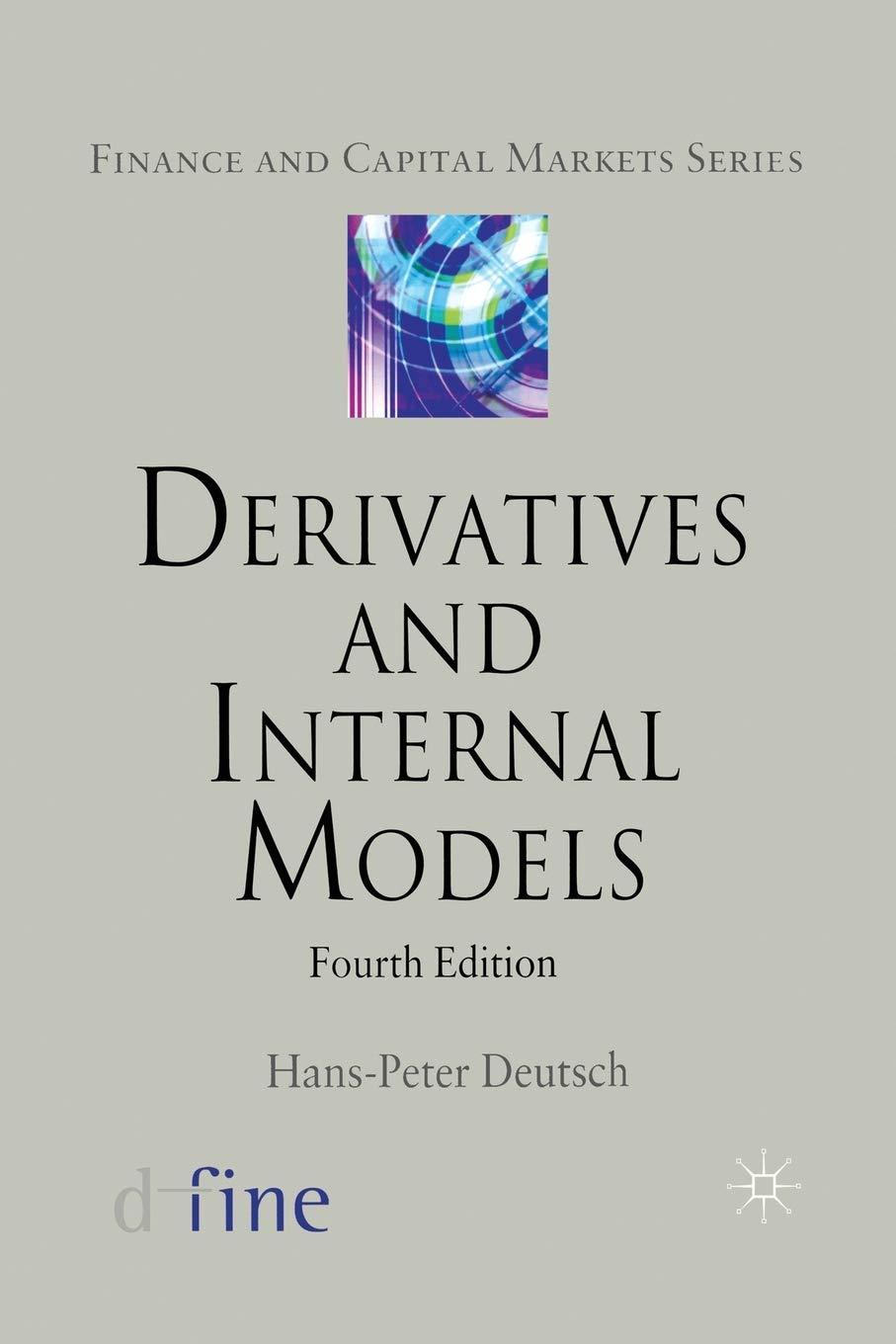Question
An oil company decides to issue a contract that has a payout after one year and after two years. After one year the investor gets
An oil company decides to issue a contract that has a payout after one year and after two years.
After one year the investor gets the dollar value of the stock price at year one, provided the stock trades between a lower bound of 20 and an upper bound of 30.
If it is below the lower bound, the investor gets the lower bound; If it is above the upper bound the investor gets the upper bound. The payout in year 2 has the same format.
The prices of the stock and several European call and put options are shown below.
S(0) = 25; riskless rate = 5%, continuously compounded. The stock pays no dividends.
|
| Strike | 1 year | 2years |
|
|
|
|
|
|
| 20 | 6.35 | 7.63 |
|
| 25 | 3.08 | 4.66 |
| calls | 30 | 2.68 | |
|
| 35 | 0.45 | |
|
| 40 | 0.15 | |
|
|
|
|
|
|
| 20 | 0.38 | 0.73 |
|
| 25 | 1.86 | 2.28 |
| puts | 30 | 4.79 | |
|
| 35 | 8.74 | |
|
| 40 | 12.00 |
- Draw the payout diagram of cash flows that occur at year 1.
- Repeat the diagram for cash flows that occur at year 2.
- Establish the value of the position at date 0. You can use put call parity to compute certain missing option values if you want. Show all your calculations step by step.
Step by Step Solution
There are 3 Steps involved in it
Step: 1

Get Instant Access to Expert-Tailored Solutions
See step-by-step solutions with expert insights and AI powered tools for academic success
Step: 2

Step: 3

Ace Your Homework with AI
Get the answers you need in no time with our AI-driven, step-by-step assistance
Get Started


